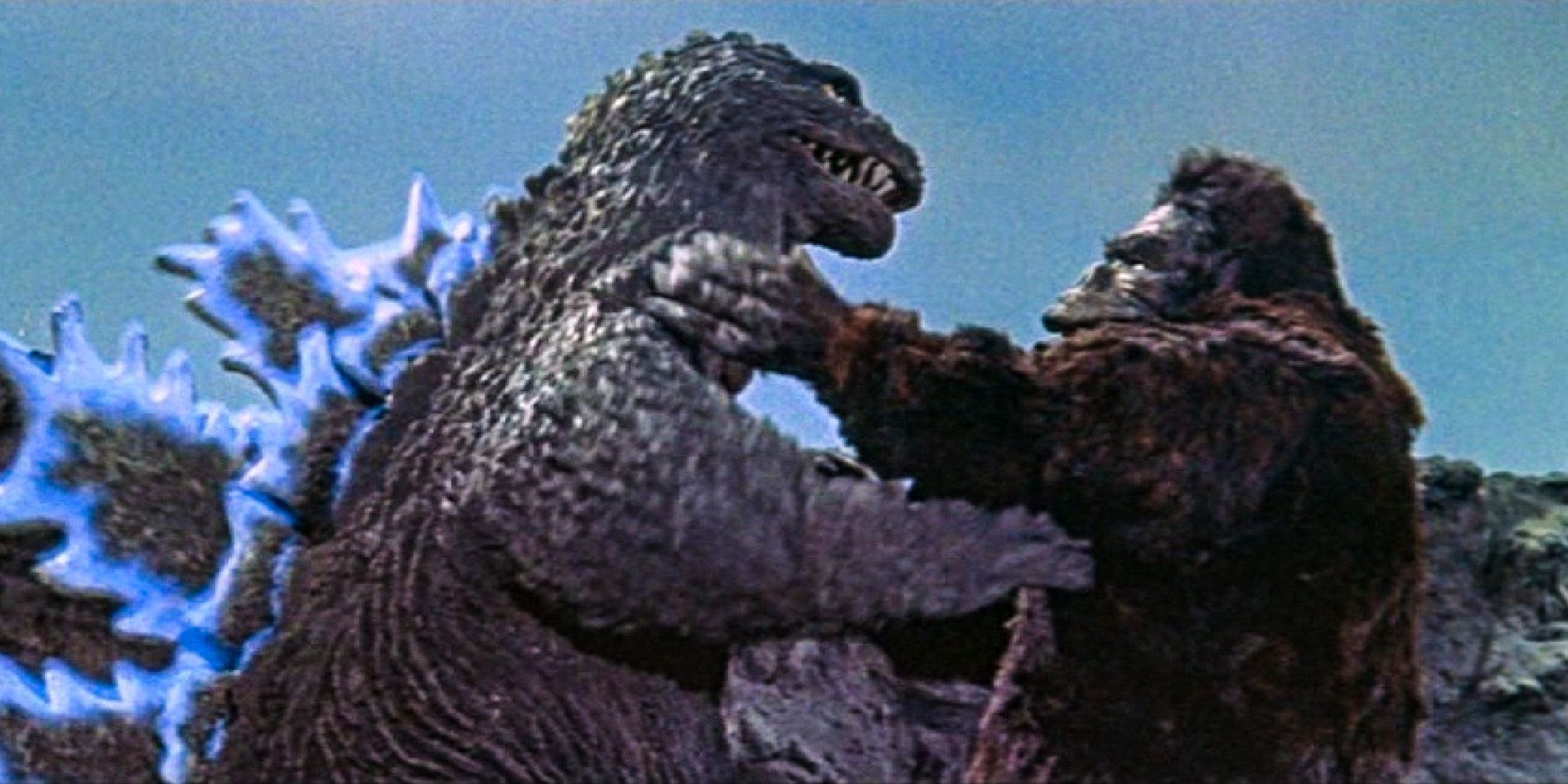
King Kong vs. Godzilla (1963)
Directed by Ishirô Honda
After spending just six months on the first sequel to 1954’s “Godzilla,” Toho took their time crafting the next entry into the franchise—1962’s “King Kong vs. Godzilla.” This marked the first time a Godzilla movie was filmed in widescreen and in color. Ishirô Honda returned as director, after being too busy to direct “Godzilla Raids Again,” and the film introduced a known character, King Kong, to fight Godzilla. Similar to the first film, “King Kong vs. Godzilla” also had an American version released a year later, in 1963 (directed by Thomas Montgomery, but primarily using footage from Honda’s film, this version used a framing technique that I thought was ineffective—an American news reporter, calmly sitting in his faraway newsroom, would occasionally pop up to explain the events of the plot to us, sometimes talking to a Tokyo news reporter or interviewing an American scientist.)

The film begins with a frustrated Japanese television producer who is tired of his show’s falling ratings. He wants to find something new to draw in viewers, so when he hears the legend of King Kong, he sends his inexperienced young employees to the remote Faro Island to find Kong and bring it back to Japan for him—no matter the obvious risks. Meanwhile, Godzilla melts from the glacier he had been placed in seven years ago during the events of “Godzilla Raids Again” (for the American version, Godzilla had been frozen in ice for millions of years, and therefore his melting serves as his introduction to the world) and again threatens the Japanese mainland. When the two ancient rivals meet, sparks will fly.

Godzilla’s second fight with King Kong, after a brief initial meeting, is by far the best fight in a “Godzilla” movie so far. It lasts longer, it’s set on a realistically-crafted mountaintop, and it involves some impressive fight choreography—at least when you consider the clumsy costumes the actors had to wear. King Kong also looks a lot better than the spiky dinosaur Anguira from “Godzilla Raids Again,” especially because, as an ape, his movements were easier to replicate and looked more natural for the actor inside (Shoichi Hirose). When Kong runs with his hands in the air, like a playful chimp, he’s absolutely terrifying. You know by his face that he doesn’t want to play. And “King Kong vs. Godzilla” pushes the costumed actors into some more precarious situations, having them throw fake rocks at each other’s heads, trip each other, and jump together into a large body of water (according to lore, people had to stand by whenever Godzilla went in the water because the suit made the actor sink quickly and there was no way for him to breathe).

“King Kong vs. Godzilla” seemed to be the most intentionally comical of the first three films. Two or three characters were so cartoonish, they could only be for comic relief. It felt like a very intentional effort to make the movie more child-friendly, and indeed this one did lack the peril seen in the first (and, to a lesser extent, second) film. The lack of a sympathetic main character spells trouble for the plot, since there is no one for audiences to worry about. Without characters with compelling stories, this sequel is little more than one long lead-up to a heavyweight deathmatch. The movie simply kills time before the main event. Again, we see the monsters take priority over any other character. That only takes the movie so far.
5.5/10